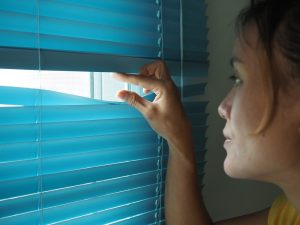Hollywood actor Hugh Jackman recently shared his skin cancer scare on Instagram. He urged his followers to take sun protection seriously.
Jackman has had several biopsies and procedures to remove cancerous lesions. His advocacy highlights the importance of skin cancer prevention and sun safety measures.
Hugh Jackman’s Cancer Experience
Jackman had two biopsies for skin cancer after a checkup showed signs of basal cell carcinoma. According to the Skin Cancer Foundation, this is the most common skin cancer type. Jackman admitted that it is the least dangerous but emphasised wearing sunscreen to prevent it. He attributed his current condition to sun exposure from 25 years ago. Jackman later announced that his biopsies came back negative and thanked his followers for their support, on his Instagram page.
Previous Cancer Scare
The actor’s first brush with skin cancer occurred in 2013. Since then, he has had at least six procedures to remove cancerous lesions. Jackman has become an advocate for skin cancer prevention, spreading awareness and urging people to take precautions:
“I know you’ve heard me talk about my basal cell carcinomas before. I’m going to keep talking about them, if need be. And if it reminds even one person to put on sunscreen with a high SPF, then I’m happy.”
Sun Exposure’s Cumulative Effect
Dr. Susan Massick, a board-certified dermatologist at The Ohio State University Wexner Medical Center, praised Jackman’s honesty about his skin cancer experience. She noted that skin cancer arises from sun exposure years before.
Prolonged sun exposure, childhood sunburns, and blistering sunburns can lead to wrinkling, premature aging, discoloration, and skin cancer. UV radiation from the sun damages cells and affects the skin’s ability to repair.
Skin Cancer Prevalence and Prevention in Asia
Skin cancer is less common in Asia compared to Western countries, particularly among the Caucasian population. However, it still occurs in Asian countries and should not be overlooked.
In Asian populations, basal cell carcinoma is the most frequently occurring type, followed by squamous cell carcinoma. Melanoma is less common in Asians compared to Caucasians, but can be more aggressive when it does occur.
Despite the lower incidence, skin cancer cases are still reported in Asia, and sun protection measures are essential for everyone, regardless of ethnicity. It is crucial to be aware of the risk factors, practice sun safety, and monitor the skin for any changes or suspicious growths.
Sunscreen Misuse and Misunderstanding
Jackman’s efforts to educate about sunscreen are important, as many people misunderstand the dangers of sun exposure. A 2021 survey by the American Academy of Dermatology showed that people overestimate their knowledge about sun protection.
One-third of survey participants admitted to getting sunburned despite their self-reported “excellent” knowledge. Sixty-seven percent did not understand the true meaning of “SPF” and how much protection it provides. Sixty-five percent admitted to forgetting to apply sunscreen when needed.
Sun Protection Basics
Dr. Terrence A. Cronin Jr., FAAD, and president of the American Academy of Dermatology, provided advice on practising “safe sun” to reduce skin cancer risk.
Seek Shade
Cronin advised seeking shade between 10 a.m. and 2 p.m. when the sun’s rays are strongest. He suggested using your shadow as a guide; if it’s shorter than you, find shade.
Wear Sun-Protective Clothing
Lightweight, long-sleeved shirts, pants, wide-brimmed hats, and sunglasses with UV protection are essential. Cronin also recommended looking for clothing with an ultraviolet protection factor (UPF) label.
Apply Sunscreen
Use broad-spectrum, water-resistant sunscreen with an SPF of 30 or higher. Cronin explained that broad-spectrum sunscreen protects against both UVA and UVB rays. Apply sunscreen whenever outdoors, even on overcast days. Apply enough to cover all exposed areas and reapply every two hours or after swimming or sweating.
When to See a Dermatologist
Cronin emphasised that skin cancer is preventable and treatable if detected early. He recommended regular skin self-exams and seeing a board-certified dermatologist if you notice new or suspicious spots or spots that change, itch, or bleed.
You can identify suspicious spots by remembering the “ABCDEs” — Asymmetry, Border irregularity, Colour variation, Diameter, and Evolution of appearance or symptoms.
Risk Factors
Consider seeing a doctor if you have a personal or family history of skin cancer, a high number of moles, a history of multiple or blistering sunburns, or prior tanning bed use.
Hugh Jackman’s skin cancer journey serves as a reminder of the importance of sun safety and skin cancer prevention. By following expert advice on seeking shade, wearing sun-protective clothing, applying sunscreen, and performing regular skin self-exams, we can reduce our risk of skin cancer.












